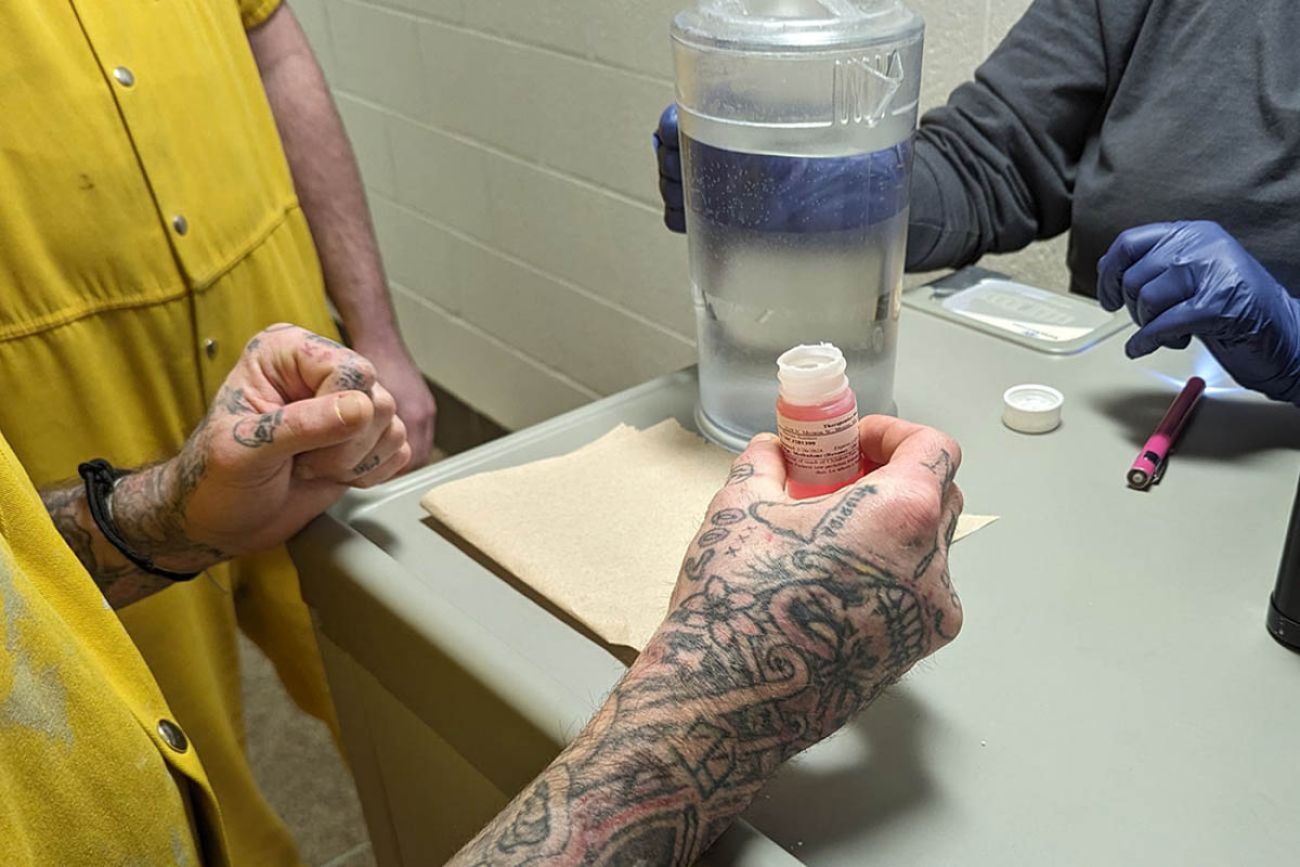Michigan opioid settlement dollars sit unspent as crisis rages


- Michigan state and local governments are getting $1.6 billion over 18 years to fight the opioid epidemic
- The state has been slow to distribute the funds to agencies that work in treatment and recovery
- About 3,000 Michigan residents die every year from opioid overdoses
Michigan has spent less than a quarter of the $123 million it has received to fight an opioid crisis that is killing a Michigander every four hours.
According to data released to Bridge Michigan by the state’s Treasury Department, as of the end of 2023, the state had spent about $29.9 million in funds received from national settlements with manufacturers, distributors and pharmacies accused of downplaying the risks and ignoring the perils of prescription painkillers, fueling the opioid crisis.
The state and local municipalities will receive $1.6 billion over 18 years, with the first checks arriving in January 2023. Fourteen months later, the bulk of funds have yet to make its way to drug treatment and recovery providers.
Related:
- Michigan won’t know how $725M is spent on opioids help. Other states do it better
- As opioid deaths mount, Michigan governments sit on millions for intervention
- See how much your Michigan community will get in opioid settlement funds
When interest accrued on unspent funds is added to the total, the state has disbursed just 23.5% of available funds to efforts to fight opioid addiction.
The spending pace will inch upward next year. A Michigan Department of Health and Human Services spending plan for fiscal year 2025, which begins this October, will bump the distribution of available state settlement funds to about 33%.
That pace would leave $189 million sitting in state bank accounts 18 months from now — funds dedicated to fighting the drug crisis that kills 3,000 Michiganders a year, more than guns and auto accidents combined.
“The money needs to be spent,” said Jonathan Stoltman, director of the Michigan-based Opioid Policy Institute, which tracks opioid settlement fund spending. “We know there are ways that money could be used to save lives. But you have to spend the money to start saving lives.”
Chelsea Wuth, spokesperson for the Michigan Department of Health and Human Services, defended the spending pace, saying the state is “working to balance the short-term needs while also planning for the multigenerational impact of the epidemic ensuring funding remains available over the long term.
“It is imperative that the strategy to combat the opioid epidemic lasts beyond (the 18-year) settlement distribution,” Wuth said.
Advocates hope the unparalleled windfall will be a turning point in a decades-long opioids fight. Half the $1.6 billion in settlement funds is going directly to counties, cities and townships, with the other half sent to the state, which can use the funds as it chooses to fight the crisis.
As Bridge reported in February, officials in Michigan counties, cities and townships have struggled to decide how best to spend the $67 million they received by the end of 2023. Many counties have not yet spent any of their funds, to the exasperation of some service providers.
Data from the Michigan Treasury was the first confirmation that the state, despite greater resources, has also been sluggish in fund distribution.
“I do have some frustrations with the counties, but the counties don’t have the capacity to do this that the state does,” said Stoltman. “So I have a higher level of frustration with the state.
“They’ve been working on this for years,” he said. “They should have a good idea how to spend this, and to be still sitting on 70% is unacceptable.”
The debate between pushing millions of dollars to service providers as quickly as possible, versus more measured funding over a longer period of time, is an example of the frustrations surrounding opioid settlement fund distribution in Michigan. Providers and advocates who work with substance use disorder argue that the sooner they get access to money, the more lives can be saved. Some state and local officials counter that it’s vital to take time to assure this once-in-a-lifetime opportunity to curb the opioid crisis isn’t wasted.
Bridge reported recently that some drug treatment and recovery services are already hobbled by a worker shortage even before they receive funds for expansion.
Greg Swan, co-founder of Fentanyl Fathers, a group that speaks to high school students about the dangers of drugs, said opioid dollars should be helping Michiganders rather than collecting interest in a bank. He was stunned when he learned how little the state had spent so far.
“It’s disgusting. Where is the urgency,” asked Swan, whose son died from a Fentanyl overdose in 2013. “If you wait, you have another 3,000 dead.”
According to the Treasury data, about $11.3 million in settlement funds have been used to reimburse the state Attorney General’s office for litigation costs connected to opioid lawsuits. About $18.6 million has been disbursed by MDHHS, mostly to regional and community organizations.
Meanwhile, the state’s unused settlement funds have accrued $3,718,469 in interest.
“When you have it sitting around making interest, that’s a financial benefit,” Stoltman said, “but there’s an active crisis that we need to respond to in real time.”
Service providers have told him that there is not a process to apply for state settlement funds, Stoltman added.
On Wednesday, the Attorney General’s office unveiled a new website dedicated to information about the state’s response to the opioid settlement, which offers a link to “view current state funding opportunities” for groups that work on the opioid epidemic. But the link directs people to a page that says there are currently “no settlement funding opportunities,” more than a year after the state began receiving settlement checks.
The website combines information that was mostly publicly available already on various state websites. It also offers a glimpse at Michigan’s lack of transparency about how opioid funds are being spent on the local level: there are links to spending plans for only eight of Michigan’s 83 counties.
Swan, the father of an opioid victim and co-founder of Fentanyl Fathers, said the state needs to “get its act together.”
“This (the opioid epidemic) is the 900-pound gorilla in the room,” he said. “Give me a good plan I can execute today rather than a perfect plan next week.”
See what new members are saying about why they donated to Bridge Michigan:
- “In order for this information to be accurate and unbiased it must be underwritten by its readers, not by special interests.” - Larry S.
- “Not many other media sources report on the topics Bridge does.” - Susan B.
- “Your journalism is outstanding and rare these days.” - Mark S.
If you want to ensure the future of nonpartisan, nonprofit Michigan journalism, please become a member today. You, too, will be asked why you donated and maybe we'll feature your quote next time!



